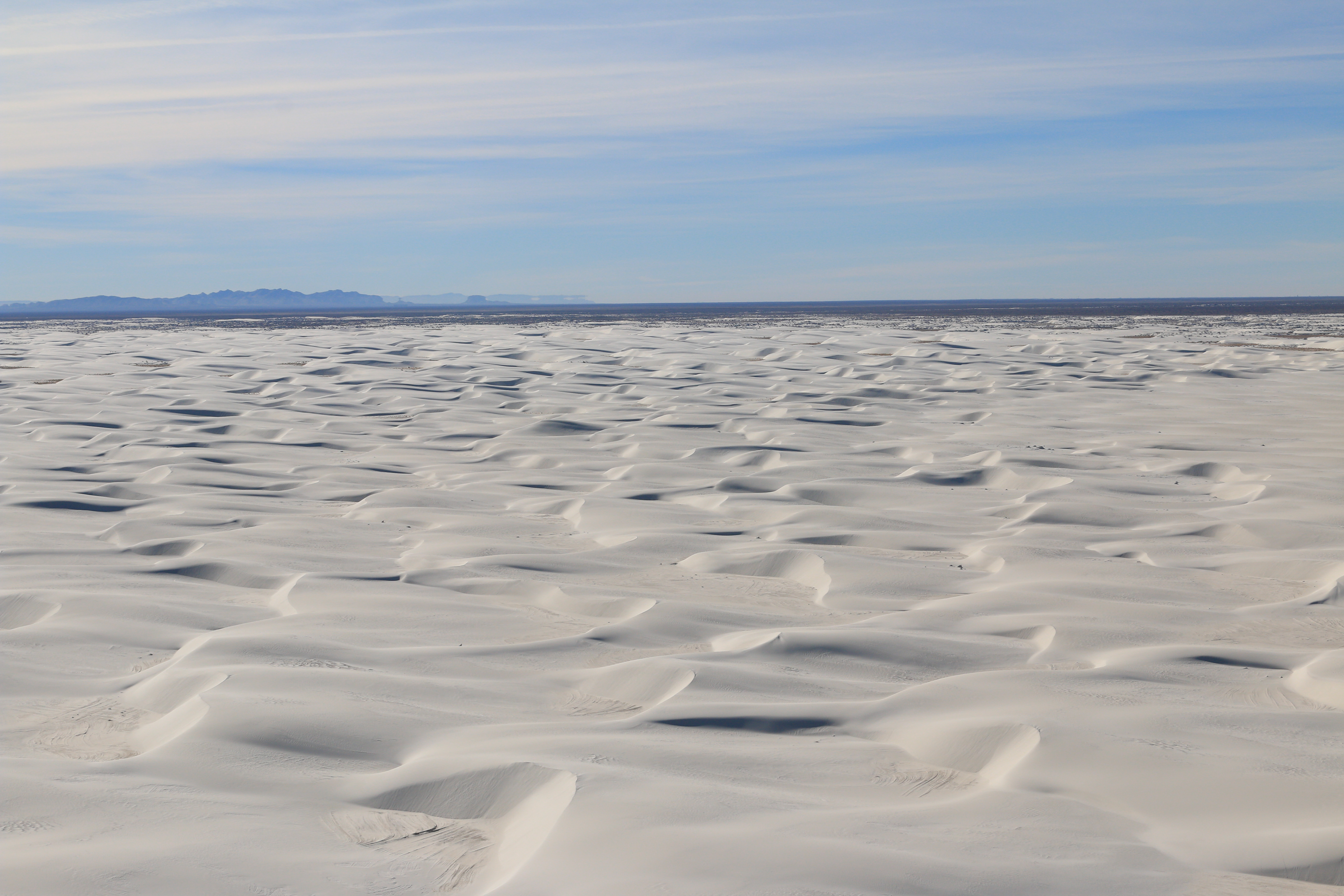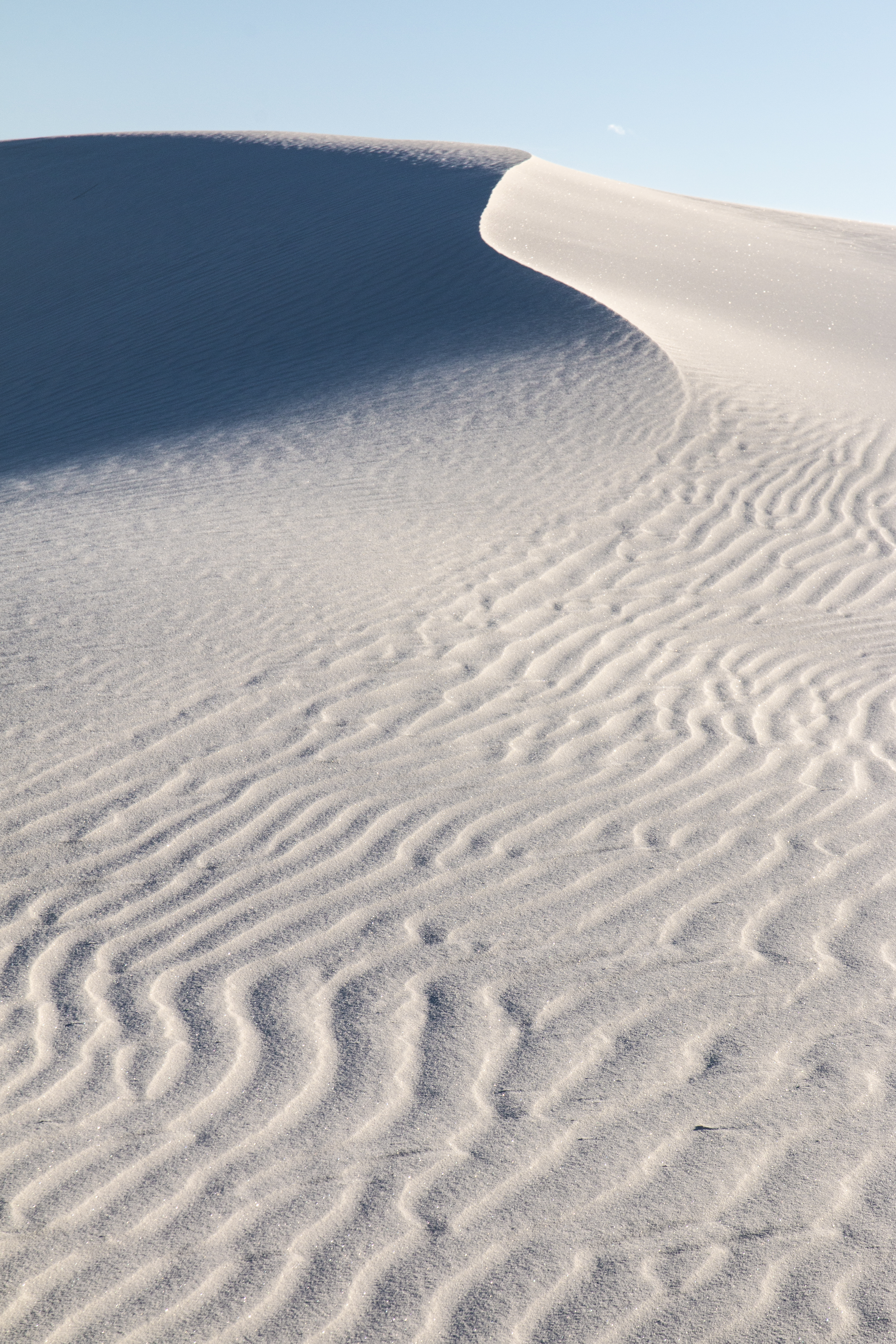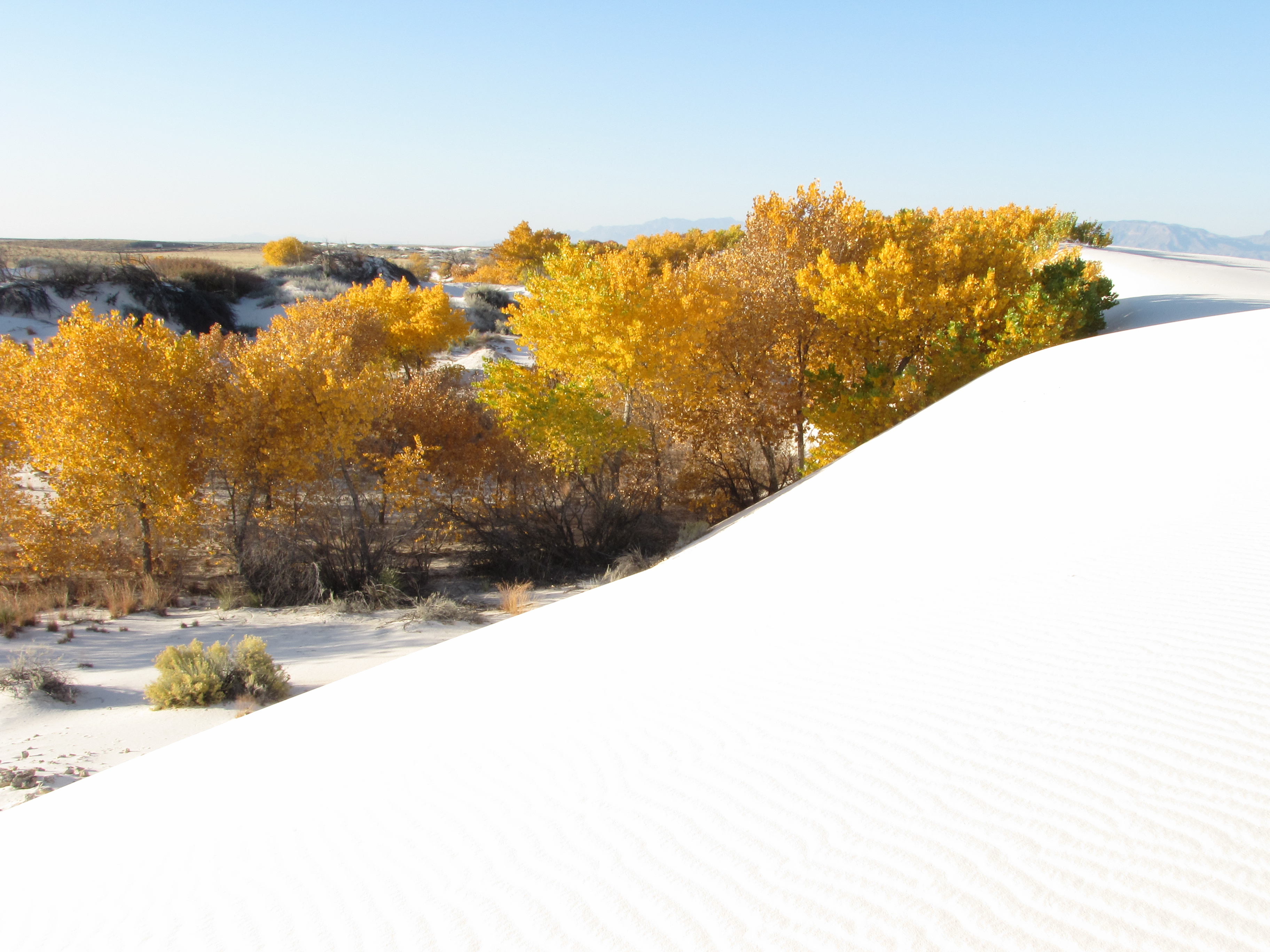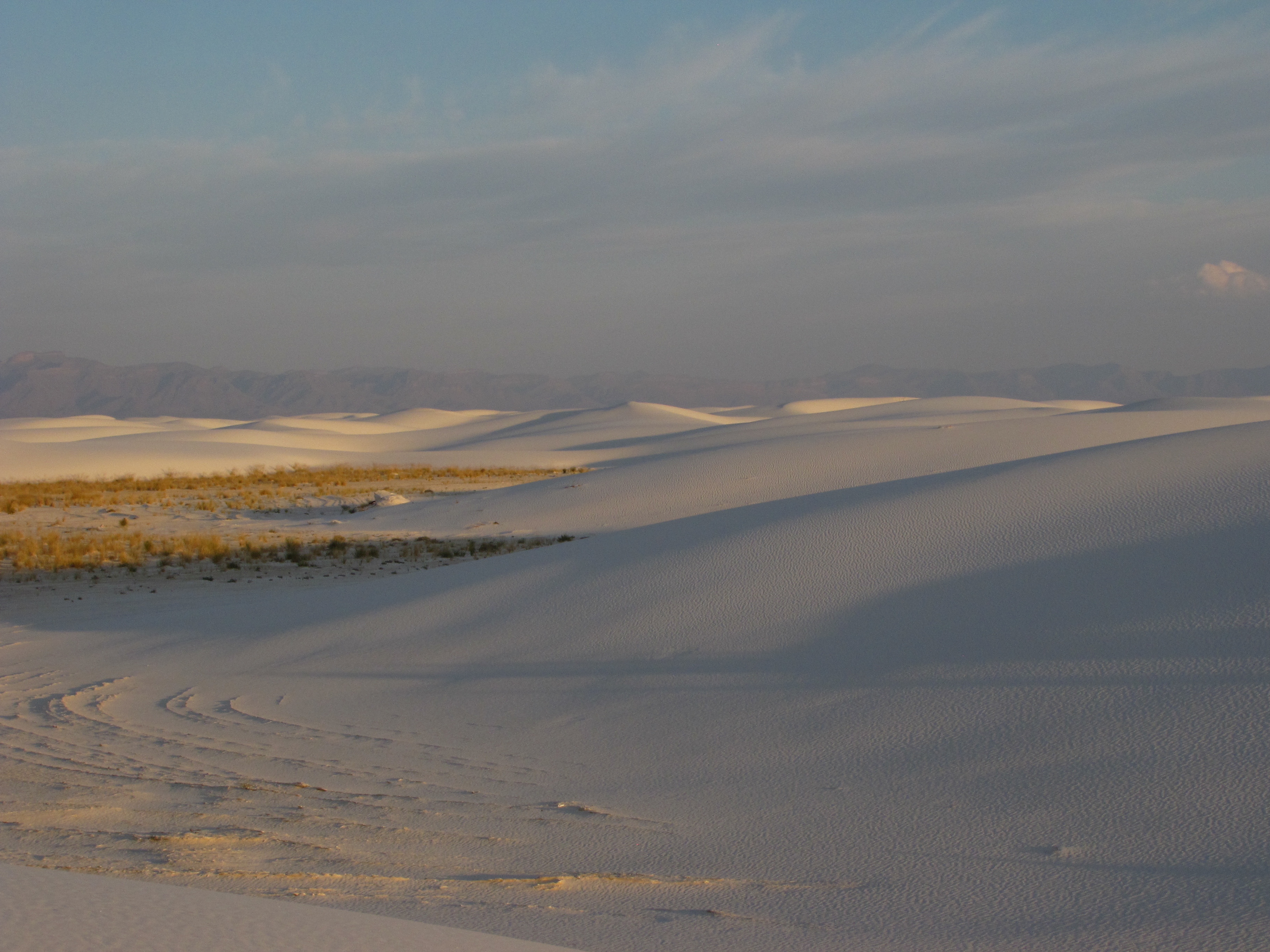White Sands National Park
Rising from the heart of the Tularosa Basin is one of the world's great natural wonders - the glistening white sands of New Mexico. Great wave-like dunes of gypsum sand have engulfed 275 square miles of desert, creating the world's largest gypsum dunefield. White Sands National Park preserves a major portion of this unique dunefield, along with the plants and animals that live here.
White Sands National Park is located off of US Highway 70 between the cities of Las Cruces and Alamogordo. The park is about 15 miles west of Alamogordo and 52 miles east of Las Cruces.
- Auto and ATV
- Scenic Driving
- Biking
- Road Biking
- Camping
- Backcountry Camping
- Food
- Picnicking
- Guided Tours
- Hiking
- Junior Ranger Program
- Architecture and Building
- Animals
- Birds
- Fish
- Dunes
- Fossils and Paleontology
- Geology
- Groundwater
Sunset

Sunsets are one of the most popular times to visit White Sands. Visitors can experience sunset every day of the year.
Aerial of Dunefield

The dunes at White Sands cover 275 square miles of the Tularosa Basin.
Ripples

The wind shapes and moves the dunes as a whole but gives each individual dune the texture of ripples.
Fall Colors

Fall is a wonderful time to visit as most of our plants with leaves change beautiful colors.
Shaded Dunes

As the sun changes its angle through the sky it allows shadow to roll across the dunes.